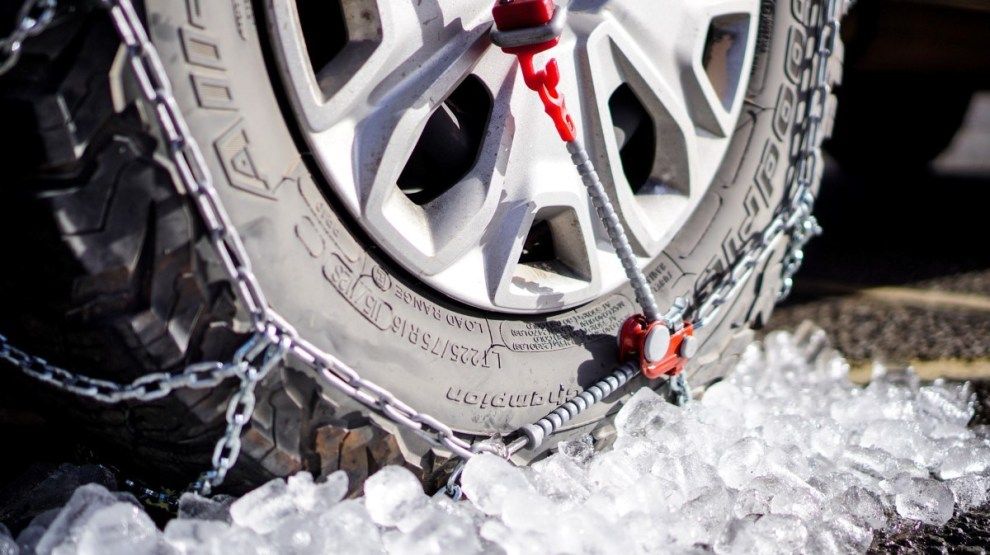Winter Tires | Chains & Traction | |
| Sure, the tread looks different. But that’s not all that separates summer and all-season tires from their heartier winter relatives. We’ve compiled and answered all of the most commonly-asked questions about winter/snow tires and the traction benefits they provide. | Unless you live in higher elevations or are frequently going over our mountain passes, most North-westerners can go for years without using their chains to add traction. But conditions have become a bit more unpredictable, lately. Here are some tips for chaining up this winter. |
If applied traction devices are required, here are some basic guidelines for their use.
Tire chains should be installed on the drive wheels of the vehicle following the chain manufacturer’s instructions. To retain as much of the normal handling characteristics of 4WD/AWD vehicles as possible, tire chains should be installed on all four tires, requiring the purchase of two pairs of tire chains.
Select chains that are the correct size for the tires. A proper fit is key to receiving the desired performance and durability. Do not deflate tires to install tire chains. A correctly sized tire chain will fit over a properly inflated tire. Additionally, because there is typically no source of compressed air to refill a deflated tire, driving with low tire pressure may cause permanent damage to the tire. Snow chains may not be available for all tire sizes.
Use only SAE Class “S” chains. The restricted wheel well clearance in most of today’s down-sized and front drive vehicles require tire chains to operate in an envelope that is no greater than 1.46-inches vertically and .59-inches laterally around the tire. These minimum clearances must be maintained between the tires and the vehicle’s fenders, suspension, struts, brake lines and braces.
It is important to pre-fit chains prior to use. Not doing so could result in damage to your vehicle or you may have to abandon your anticipated journey all together. Since tire chains are only really required when weather is at its worst, it’s a good idea to get familiar with chain installation before there is snow and ice on the ground. You may want to buy a tire chain installation helper. These small ramps are designed to prevent slipping and allow you to lay a cross chain in a pre-formed indentation. Once you drive onto the ramp, the chains are positioned under your tire for easier installation following the manufacturer’s directions.
Tire chains should always be carried in the trunk during the appropriate times of the year and only mounted on the vehicle when warranted by driving conditions or required by law. Chain requirements can change depending on the region and severity of the snowstorm, so it’s best to be prepared. For additional details and up-to-the-minute chain requirements status, please visit our Winter Prep Road Conditions resource page.
Chain requirements can change depending on the region and severity of the snowstorm, so it’s best to be prepared. For additional details and up-to-the-minute chain requirements status, please visit our Winter Prep Road Conditions resource page.
When highway signs indicate tire chain requirement, a driver will usually have about one mile between the “Chains Required” signs and the passage checkpoint. However, these control areas can shift rapidly from place to place because of changing weather and road conditions.
After initial chain installation, all of the tire chains should be re-tightened after the vehicle has been slowly driven forward or backward at least 15 feet. Failure to do so may allow the chains to remain loose, risking damage to the vehicle and reducing chain life.
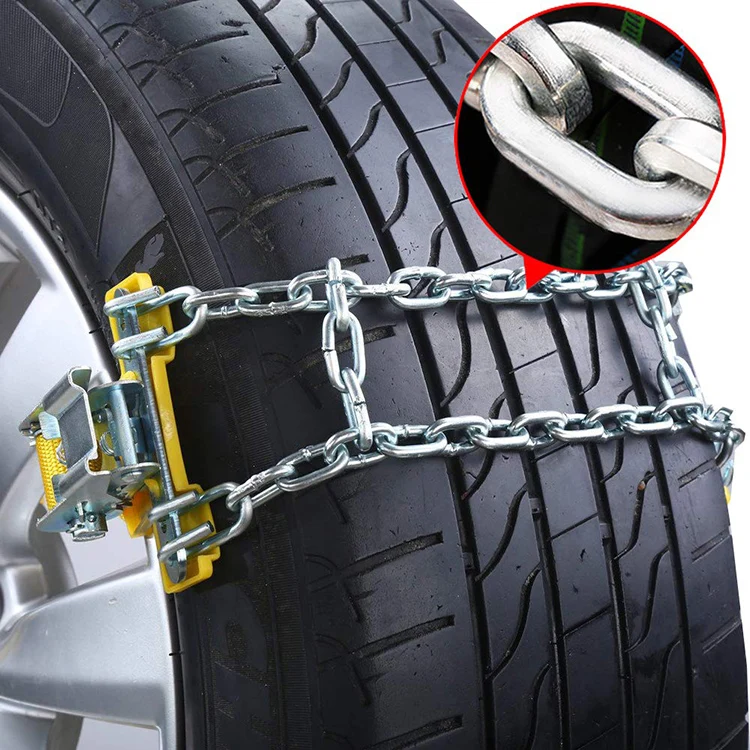
Remove all aftermarket traction devices as soon as the vehicle reaches clear roads. When removing chains, drive beyond the signs reading “End Chain Control” to a pull-off area where you can safely remove them.
While it sounds like snow chains are considered a last resort for when the conditions get really bad, preparation before driving into snow country in winter is important because it helps control a potentially frustrating and tiring driving experience.
This relative newcomer to the traction device market has advantages and drawbacks similar to those of traditional chains. Ranging in price from $70-$200, there are two main types: a full-coverage textile sock, and a low clearance chains.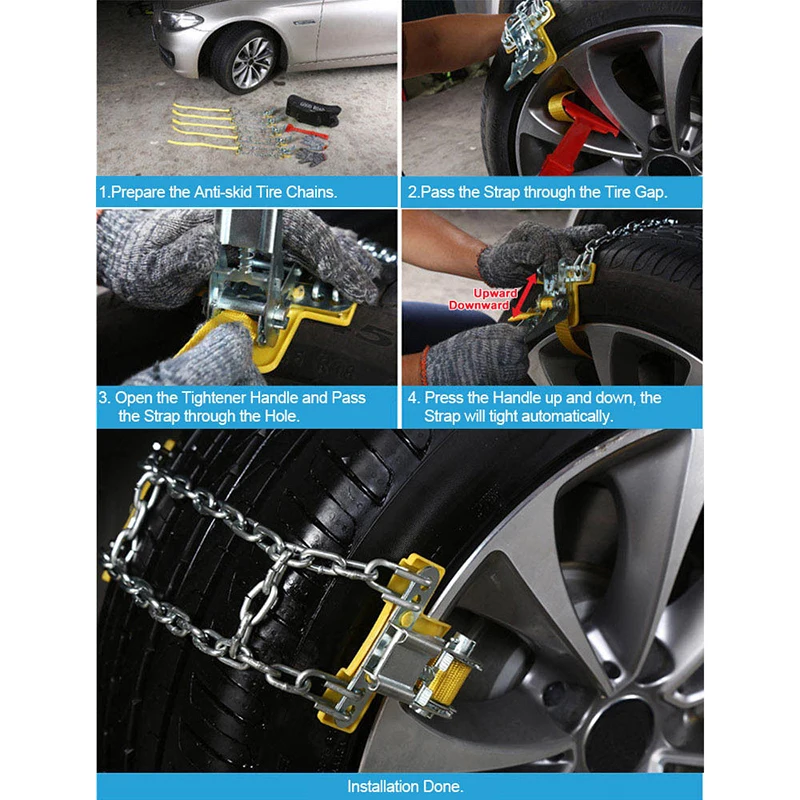 Their manufacturers call out lighter weight, easier storage, and high reusability as chief benefits. Being less bulky than chains, they may also be a better option for vehicles with a tighter wheel well clearance. According to Consumer Reports testing, tire sock performance is comparable to that of chains, with the more expensive woven cord style performing best among the tested options. However, they were all similar to chains in terms of installation effort, and none were more effective than a quality winter tire. Assuming you limit use in both speed and distance, the tire sock can be a practical alternative to chains in most winter emergency kits.
Their manufacturers call out lighter weight, easier storage, and high reusability as chief benefits. Being less bulky than chains, they may also be a better option for vehicles with a tighter wheel well clearance. According to Consumer Reports testing, tire sock performance is comparable to that of chains, with the more expensive woven cord style performing best among the tested options. However, they were all similar to chains in terms of installation effort, and none were more effective than a quality winter tire. Assuming you limit use in both speed and distance, the tire sock can be a practical alternative to chains in most winter emergency kits.
In every practical respect, they’re the same.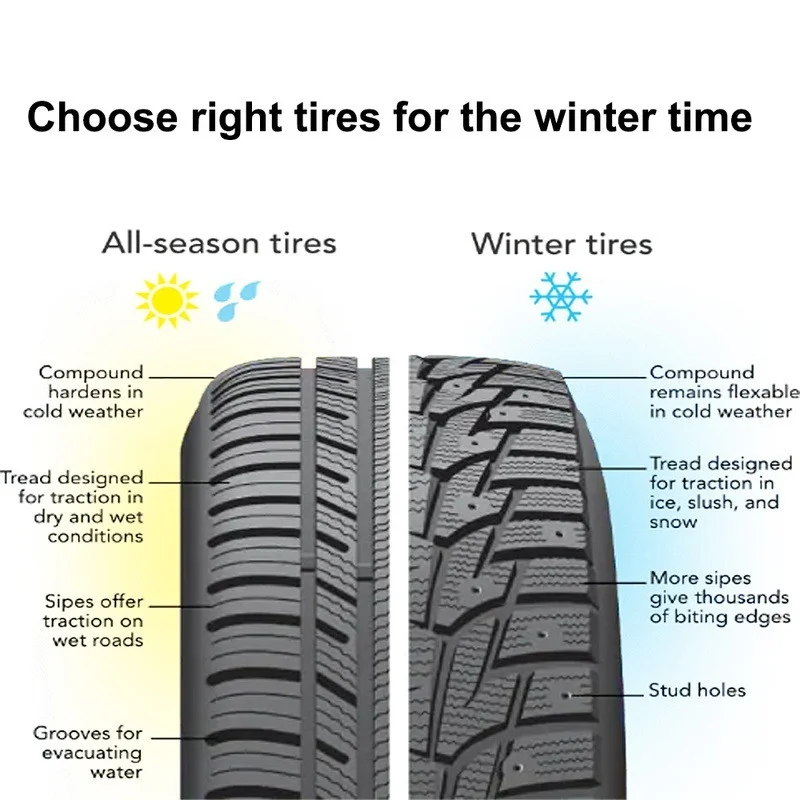 But the term ‘snow’ tire implies that winter tires are exclusively for snow, which isn’t the case. The compounds in all-season and summer tires are designed to withstand the higher temperatures and road conditions of warm weather. They perform best at 50-90 degrees, but begin to get brittle as the temperatures drop. When temperatures start hanging at 45 degrees and below, winter tires offer better traction that allow for safer braking and accelerating. For these reasons, we prefer calling them winter tires.
But the term ‘snow’ tire implies that winter tires are exclusively for snow, which isn’t the case. The compounds in all-season and summer tires are designed to withstand the higher temperatures and road conditions of warm weather. They perform best at 50-90 degrees, but begin to get brittle as the temperatures drop. When temperatures start hanging at 45 degrees and below, winter tires offer better traction that allow for safer braking and accelerating. For these reasons, we prefer calling them winter tires.
For best results, you should install winter tires on all four wheels. This is true for every vehicle type. Previous generations of winter tires were little more than an all season tire with an aggressive tread design. With today’s advancement in temperature-sensitive rubber compounding, having fewer than all 4 tires installed not only impedes the tires’ ability to do their job – it may lead to handling and traction imbalances.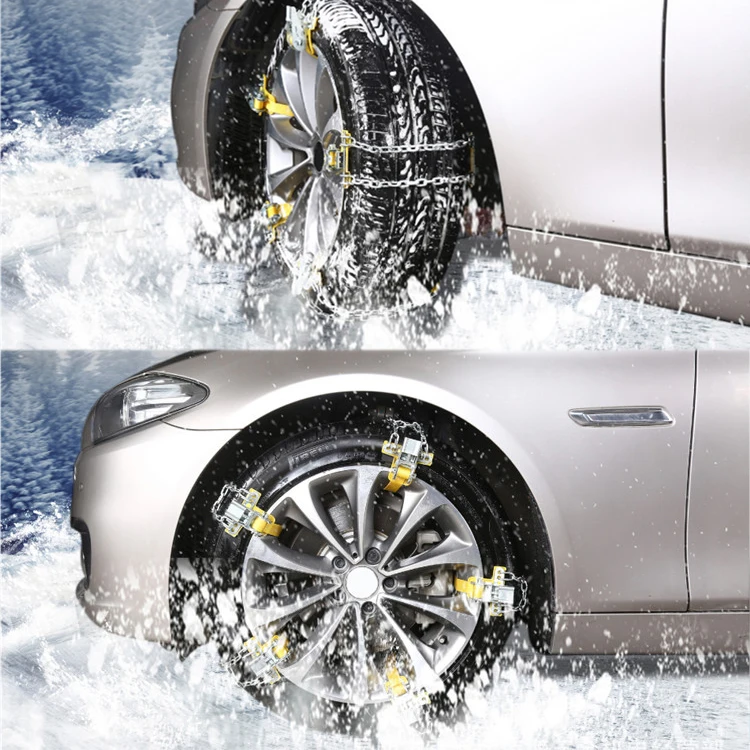
Traction control does not actually provide you with more traction. Traction control limits your wheel spin, making it easier to stay connected to the surface you’re driving on. If your tires aren’t connecting sufficiently, there’s nothing for your traction control system to control.
Do ABS Brakes Eliminate The Need For Winter Tires?ABS brakes are a vital safety feature. They pulsate your brakes in order to keep your tires from locking up. While very helpful, ABS brakes do not eliminate the need for winter tires. Your brakes, even with the anti-lock function, do not provide traction. In fact, your braking ability directly relates to the traction provided by your tires. The best winter traction is when you have four winter tires installed on your vehicle.
My Car Has Front Wheel Drive, Do I Need Winter Tires?Front wheel drive vehicles do have an advantage when it comes to accelerating, because of the added weight on the front end.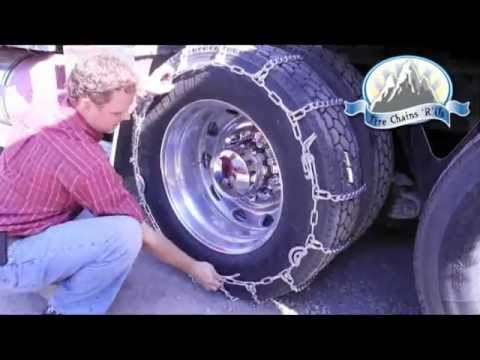 However, this does not help when braking, and it makes steering and cornering more dangerous in winter driving conditions. The best way to maximize your front wheel drive’s winter performance is to install four winter tires. Rather than losing the performance advantages of your front wheel drive vehicle, you can increase your safety and performance with winter tires.
However, this does not help when braking, and it makes steering and cornering more dangerous in winter driving conditions. The best way to maximize your front wheel drive’s winter performance is to install four winter tires. Rather than losing the performance advantages of your front wheel drive vehicle, you can increase your safety and performance with winter tires.
All-wheel drive and four-wheel drive vehicles are great at delivering the correct amount of power and control to the wheels. But if the tires aren’t gripping the driving surface, that power and control isn’t as effective. Without winter tires, accelerating, braking and turning can be just as dangerous for all-wheel drive and four-wheel drive vehicles as it is for a two-wheel drive vehicles.
When Should I Install My Winter Tires?At AAA, we recommend you change your tires when you change the clocks. When we ‘fall back,’ it’s a great time to mount your winter tires, check your battery, and do a whole winter tune-up to ensure you’re ready for Old Man Winter. If you prefer to wait, keep an eye on the average temperatures: When they start to dip below 45 degrees and before the first snow fall, it’s time to swap. When we ‘spring forward’ and temps are consistently warmer than 45 degrees, you are ready to reinstall your all-season tires. Winter tires tend to wear faster in warm temperatures; changing them before it gets too warm will help you extend their life over to 3-4 years.
When we ‘fall back,’ it’s a great time to mount your winter tires, check your battery, and do a whole winter tune-up to ensure you’re ready for Old Man Winter. If you prefer to wait, keep an eye on the average temperatures: When they start to dip below 45 degrees and before the first snow fall, it’s time to swap. When we ‘spring forward’ and temps are consistently warmer than 45 degrees, you are ready to reinstall your all-season tires. Winter tires tend to wear faster in warm temperatures; changing them before it gets too warm will help you extend their life over to 3-4 years.
Historically, winter tires have been louder and rougher-riding than their summer/all-season counterparts. However, advancements in tire technology have significantly improved rideability as well as performance. You may hear or sense a slight difference when changing from an all-season to a winter tire. However, in most cases the noise levels are much lower than what they used to be.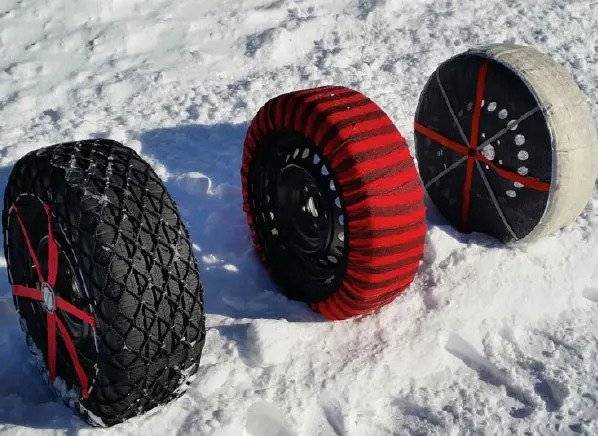 Of course, studded winter tires are noisier than those without studs, but the increase in safety is well worth any incremental increase in noise.
Of course, studded winter tires are noisier than those without studs, but the increase in safety is well worth any incremental increase in noise.
AAA recommends always driving with care and consideration, and employing safe driving techniques can make a big difference in winter conditions. However, even the most conscientious driving will not help your tires connect to the road. Adding traction to your tires and winter tires is a way to provide you with an added safety advantage.
What If I Simply Don’t Drive When The Weather Is Bad?Yes, it would be ideal to avoid driving when conditions get unruly. However, even with modern weather technology, it’s still very difficult to know exactly when, where, and how bad the weather will be. Rather than gambling with your safety, be prepared with winter tires that are ready to handle the weather, no matter when it strikes.
While you can probably safely drive your AWD (all-wheel-drive) with all-season tires in light or moderate snow, it’s a common misperception that AWDs will act like a tank in slick conditions.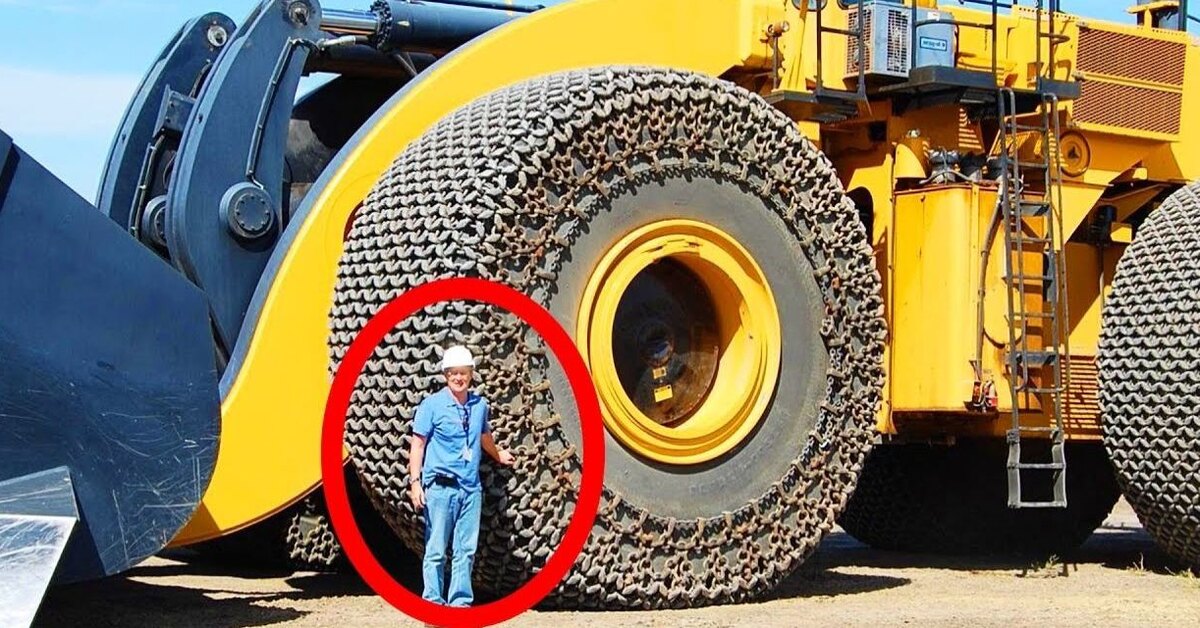 That just isn’t the case. You need snow or winter tires or even snow chains when facing severe winter roads in any vehicle. That includes AWDs. Here’s what you need to know about snow tires and your AWD or 4X4.
That just isn’t the case. You need snow or winter tires or even snow chains when facing severe winter roads in any vehicle. That includes AWDs. Here’s what you need to know about snow tires and your AWD or 4X4.
According to Consumer Reports, AWD and 4X4 vehicles may do fine in light snow. But there is a difference between doing fine and successfully navigating treacherous winter roads. When comparing AWD and 4X4 on winter roads, the deciding factor comes down to the vehicle and what you want from it. An AWD will transfer power to the wheels that need it, while a 4X4, when the transfer case is selected, provides power to all four wheels at once at much lower gears. When paired with snow or winter tires, both options can offer solid, safe-driving results.
AWD is great at getting your car moving from a dead stop and accelerating smoothly in a straight line when the pavement is slippery.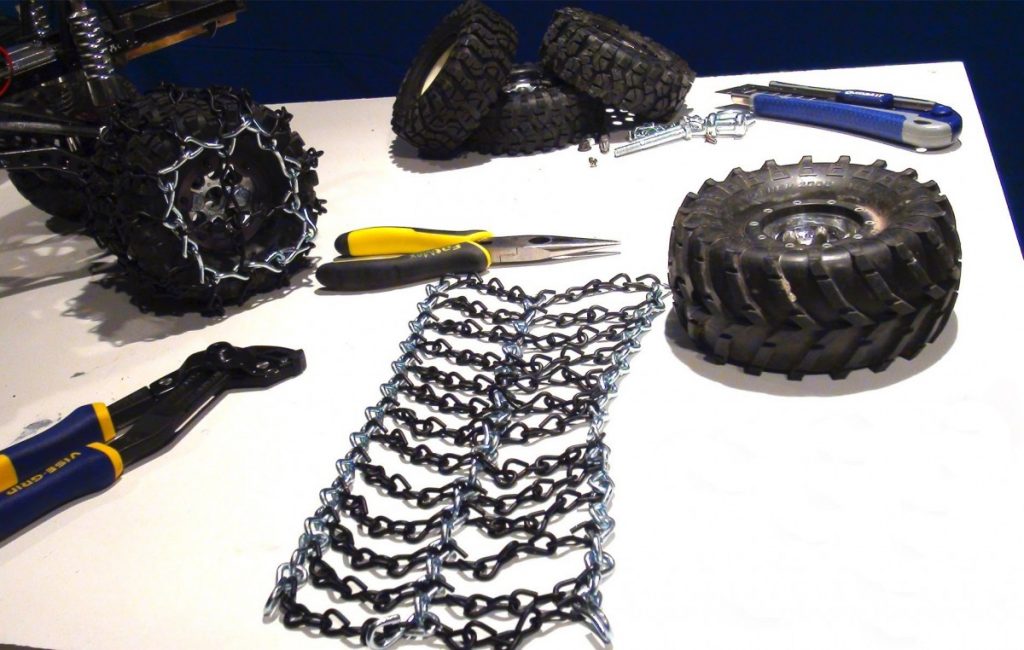 It’s able to do this because it sends more power to whichever wheels are getting the most traction and less power to the spinning wheels.
It’s able to do this because it sends more power to whichever wheels are getting the most traction and less power to the spinning wheels.
But if you don’t have enough traction in the first place, the AWD system can’t compensate. If none of the four tires has enough grip, you’re going to struggle to stay in control in wintery conditions.
This is why an AWD equipped with all-season tires might not deliver safe braking and sharp cornering on snow or ice. In fact, independent testing from Consumer Reports shows that a front-wheel-drive (FWD) mounted with winter tires will have a shorter stopping distance and better cornering than an AWD with all-season tires.
It’s true, AWD and 4x4 vehicles can help you maintain momentum in snow and ice. But when it comes to braking and cornering performance in these conditions, your tires rather than the type of vehicle make a big difference. Les Schwab recommends that you have winter tires on your AWD and 4x4 if you’re regularly driving in snow and ice.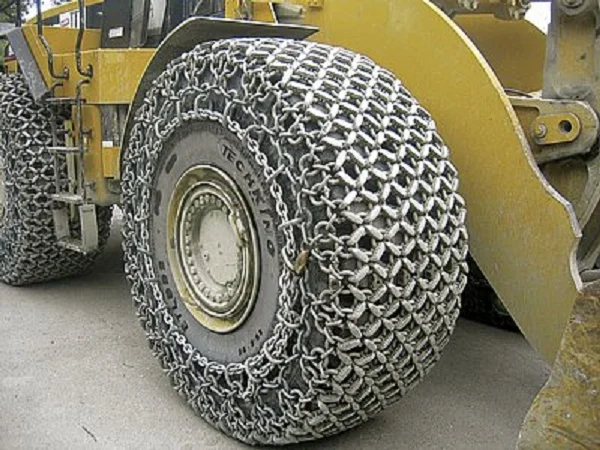 We also recommend that you carry a set of snow chains.
We also recommend that you carry a set of snow chains.
What some people call snow tires are, in fact, winter tires built for better road grip in ALL winter conditions — rain, ice, snow and slush. These tires are made with specialized rubber that stays softer in cold temperatures. They’re designed with tread features like bigger grooves, biting edges, sipes, optional studs and variations in the block shapes for improved grip even in subzero temperatures.
Other differences between all-season and winter tires include:
Traction: Winter tire traction is optimized with deeper grooves and sharp, irregular edges while all-season tires feature normal tread for a wide range of conditions.
Technology: Winter tires are designed with a rubber compound that remains flexible in snowy and icy conditions. All-season tires are designed to withstand hot weather with a harder rubber. However, those tires cannot grip snow and are prone to sliding on ice.
Built For: Snow tires are built to grip snow, slush and ice while all-season tires are made for spring, summer, and fall.
Learn more about how to choose between all-weather, all-season, and winter tires.
AWD is helpful when you’re starting to move or accelerating on slick roads, but not so much when you’re cornering or stopping. It’s not a substitute for having winter tires.
If you’re only visiting snowy areas once or twice a year, you may not need to invest in another set of tires. However, you should carry a set of tire chains for those just-in-case moments. Check your owners manual for chain restrictions and recommendations, including the use of tire socks.
If it’s frigid where you live or you’re traveling in more than light snow, buying a set of winter tires for your AWD will deliver the road grip you need for most winter weather conditions. Of course, you may also need a set of tire chains or tire socks for those times when the snow and ice get especially treacherous.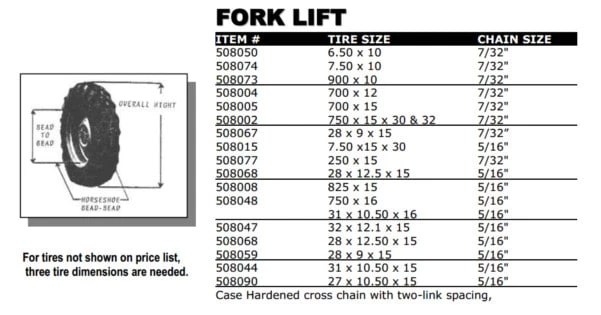
Your local Les Schwab can help you choose the best winter tires for your driving and safety needs. Stop by today and face this year’s winter roads with confidence.
SHOP WINTER TIRES
We deal with the abbreviations that manufacturers mark their all-wheel drive models.
"AWD produces less torque than 4WD."
Opinion of one Internet "expert"
The abundance of ingenious abbreviations such as AWD, 4WD, as well as Part-Time 4WD, Full-Time 4WD, 4x4, 4matic and other abbreviations is a good publicity stunt, suggesting to the car owner that he was not mistaken when buying a car, choosing "the best". At the same time, unfortunately, such nameplates often do not have an unambiguous interpretation. Who does not believe, can type in the search line, say, AWD and 4WD - you will be brought into such jungle, from which you can no longer get out. It’s better not to stutter about technical literacy in general.
It’s better not to stutter about technical literacy in general.
Meanwhile, by and large, there are three main types of cars called all-wheel drive (if you don’t get deep into the very jungle with “haldexes”, asymmetrical differentials, etc.). Typical representatives of the "trinity" are shown in the photo below.
| UAZ Patriot. The drive to the rear axle is permanent. Front axle drive - plug-in; there is no center differential. UAZ Patriot. The drive to the rear axle is permanent. Front axle drive - plug-in; there is no center differential. | Lada 4x4. The drive on both axles is permanent, there is a center differential. Lada 4x4. The drive on both axles is permanent, there is a center differential. | Renault Duster. The front axle drive is permanent. Renault Duster. The front axle drive is permanent. Drive to the rear - connected through the clutch. (Reverse schemes are also known, when the main drive axle is the rear, and the front is connected through the clutch ...) |
All About Differentials: Torque Truth
And here is the first feature, unexpected for many. From the point of view of the pedant of the title of an all-wheel drive car, only the Togliatti car is truly worthy of the indicated trinity! After all, only her all-wheel drive works in 100% of cases, while for the rest it is, in general, a plug-in function: the UAZ often rides in the rear-wheel drive Zhiguli mode, and the Duster is like the front-wheel drive VAZ G8.
The second feature is also funny - few people know about it.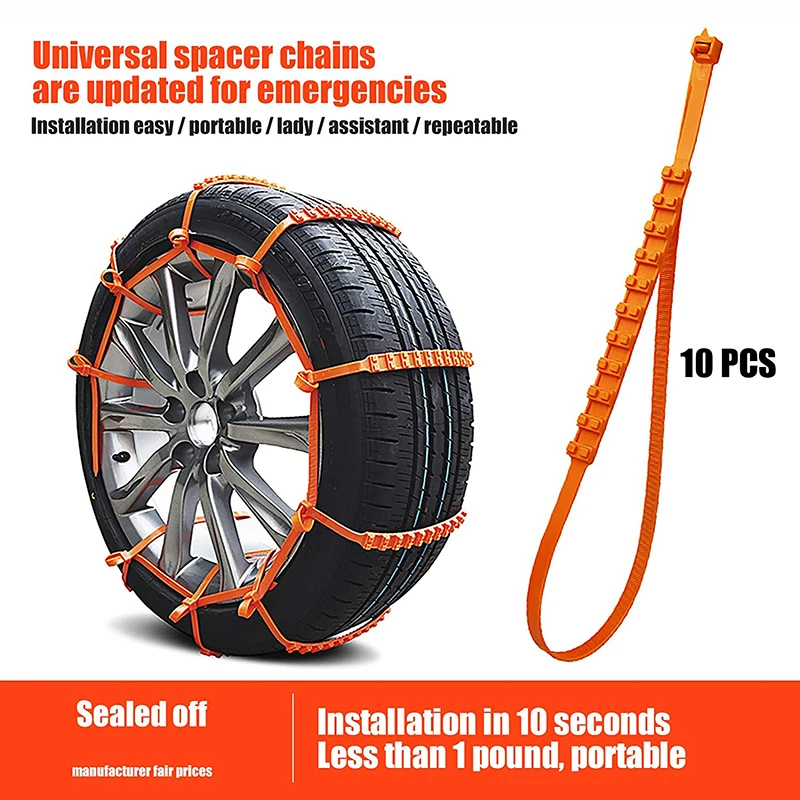 Even with the axles turned off (the front axle on the UAZ and the rear axle on the Duster), a bunch of transmission elements on these cars still constantly rotate! On the UAZ, the axle shafts of the front axle and cardan will spin, on the Duster - the rear gearbox and rear wheel drives, as well as the cardan. And this is noise and fuel consumption even in monodrive mode.
Even with the axles turned off (the front axle on the UAZ and the rear axle on the Duster), a bunch of transmission elements on these cars still constantly rotate! On the UAZ, the axle shafts of the front axle and cardan will spin, on the Duster - the rear gearbox and rear wheel drives, as well as the cardan. And this is noise and fuel consumption even in monodrive mode.
Now - about the most tricky one: how the moments are distributed on these machines. Let's consider several situations. At the same time, we conditionally assume that there are no friction and other losses, the wheel loads are the same, the longitudinal and transverse weight distributions are uniform, and the adhesion conditions of tires with the coating are the same, unless otherwise specified.
UAZ Patriot. If the front axle is not connected, then the moments on its rear wheels are equally distributed, and there are no moments on the front wheels.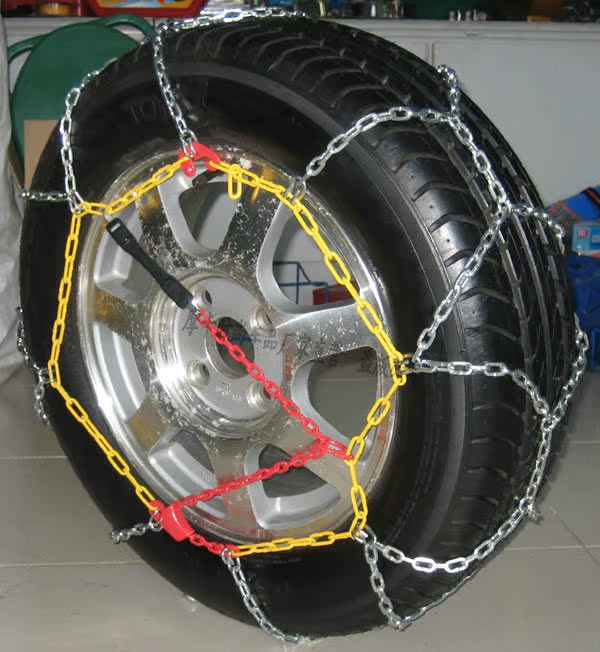 If you connect the front axle, then on each axle the moments will be divided equally, but the distribution along the axes will depend on the loads and adhesion forces. On dry pavement, this will lead to the fact that the front and rear wheels will begin to slip relative to each other, since there is no one to equalize their moments: there is no center differential.
If you connect the front axle, then on each axle the moments will be divided equally, but the distribution along the axes will depend on the loads and adhesion forces. On dry pavement, this will lead to the fact that the front and rear wheels will begin to slip relative to each other, since there is no one to equalize their moments: there is no center differential.
Lada 4x4. If the center differential is not locked, then the torques on all four wheels are equal. Accordingly, there will be no slippage. If, however, the center differential is blocked, then, as in the UAZ, when driving on a good road in a turn, relative slipping of the front and rear wheels will appear.
Renault Duster. When driving in Lock mode, the clutch rigidly connects the rear axle, which can lead to slippage on good surfaces.
UAZ Patriot. If the front axle is not connected, the machine will stop. When the bridge is connected, the “independent” axis will get all the moment from the engine, and the car will go further.![]()
Lada 4x4. If the differential is unlocked, the machine will stop. If you block the center differential, then it will go further.
Renault Duster. When the 2WD selector is in position, the vehicle will stop. In the Auto or Lock position, the clutch will engage the rear axle and it will continue to move.
Four-wheel drive rating: roller test
And where do all these AWD and other 4WD come from. I called a colleague at the car factory - he, to my pleasure, confirms what I came to myself.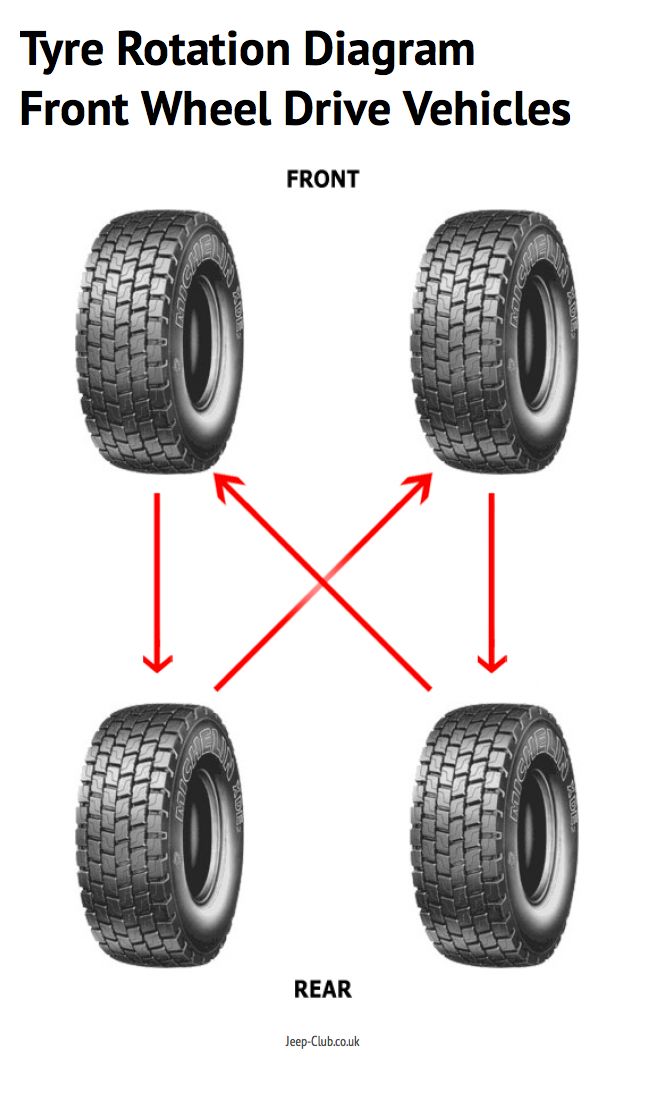 Say, such designations as a whole are not technically legislative, but purely marketing, conditional. Therefore, in life there may be exceptions. But basically AWD is “mono-drivers”, which have the ability to connect a second drive axle. And 4WD is, let's say, cars with permanently connected axles with a predetermined distribution of torque between the axles (for example, 50 to 50, which have the ability to block the center differential).
Say, such designations as a whole are not technically legislative, but purely marketing, conditional. Therefore, in life there may be exceptions. But basically AWD is “mono-drivers”, which have the ability to connect a second drive axle. And 4WD is, let's say, cars with permanently connected axles with a predetermined distribution of torque between the axles (for example, 50 to 50, which have the ability to block the center differential).
In general, if you just need to get out of a snowdrift from time to time, then any of the listed schemes with a hint of all-wheel drive will significantly exceed the usual "4 by 2". And that's exactly what most people need. Well, those who are preparing for real off-road exploits still live in a parallel universe, and therefore do not need any explanation.
Good luck on all roads!
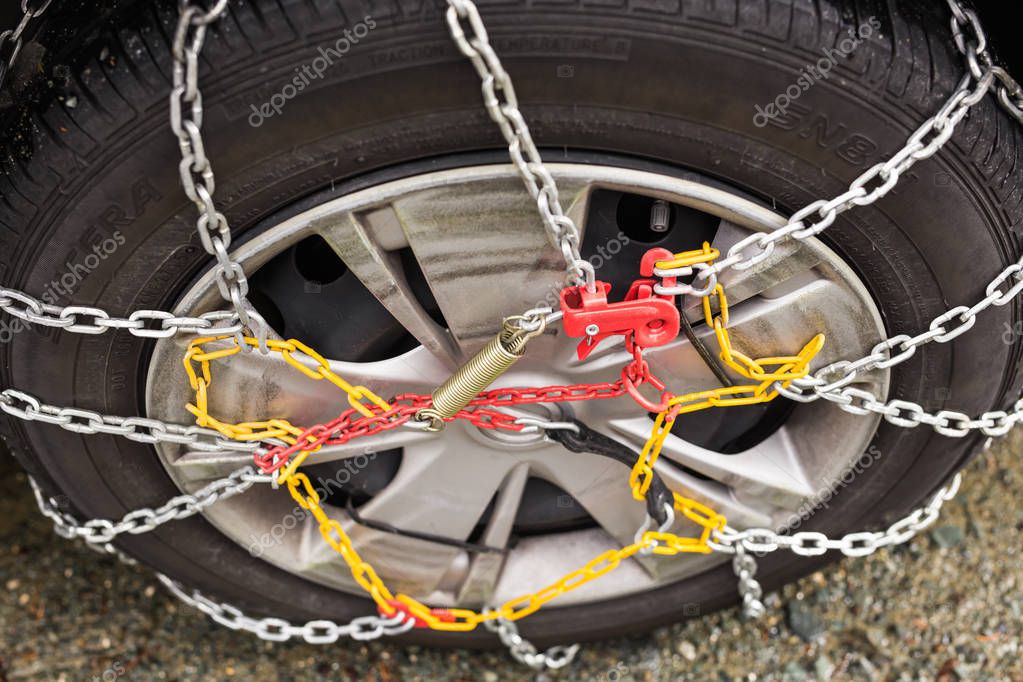 One set of chains (2 pcs.) per axle is enough. As for bracelets, the more of them are mounted, the better the car “rows”, each bracelet wears out less. Recommended quantity - from 6 pcs.
One set of chains (2 pcs.) per axle is enough. As for bracelets, the more of them are mounted, the better the car “rows”, each bracelet wears out less. Recommended quantity - from 6 pcs. In view of the fact that winter or even studded tires are almost universally used in Russia in winter, snow chains are not widely used. Except, maybe, areas of complete impassability.
Contents
Whereas in Europe, on the contrary, few people use studded tires. And when traveling to ski resorts, on some roads you may encounter a mandatory requirement to use snow chains.
You will be informed about this by the relevant road sign. And the fact that you can have winter tires installed will not matter. So for peace of mind, it's better to have chains in the trunk.
New vehicles are often offered with different wheel/tyre sizes.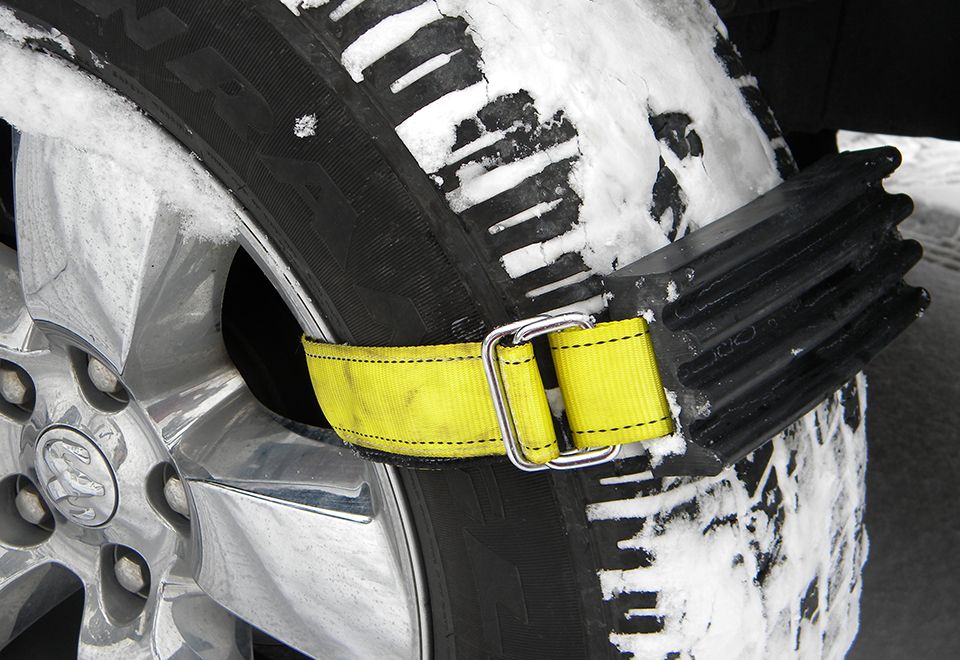 Some of them may not be suitable for fitting snow chains.
Some of them may not be suitable for fitting snow chains.
The problem is that installing chains adds a few centimeters to the width and diameter of the tires. This means that with some wheel/tire combinations, the snow chains will hit the body, suspension or parts of the braking system, which can lead to serious consequences.
Circuits can also interfere with the correct operation of electronic sensors mounted on the steering wheel.
The vehicle manual must clearly state which wheel size the manufacturer allows snow chains to be used with.
If the chains cannot be used with the wheels installed on your machine, then your only option is to buy a second set of wheels/tyres.
You should only use snow chains where the road surface is completely covered by compacted snow or ice.
If signs require the use of snow chains, they must be fitted to all vehicles. Including those equipped with both winter and studded tires.
If you attempt to use the chains on a road that has been cleared of snow, you risk damaging the road surface and the vehicle. If you damage the road surface, you may face a large fine.
Therefore, as soon as you reach a section of the road free of snow or ice, you must select a level place and remove the chains.
It can be quite inconvenient to install or remove chains, for example when the wheel arches are filled with snow and your gloved hands are wet and cold.
So when you buy chains, don't just throw them in the trunk and forget about them. The practice of installing them at home when the weather is warm and dry, and you feel much more confident when you have all the necessary tools at hand, will help to cope with them in more difficult weather conditions.
At least one pair must be used on the drive wheels. But two pairs are better, especially if you spend a lot of time in conditions where snow chains are a must.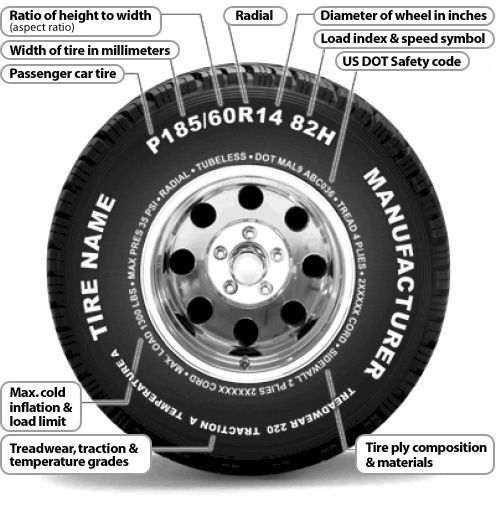
As a general guide:
As a general rule, traction control (a system that controls the amount of slip on the vehicle's drive wheels to prevent them from spinning during acceleration) should be disabled when snow chains are used.
It is important to drive carefully with snow chains fitted. For cars with chains, different countries have their own speed limits. Reduce speed when cornering and avoid sudden acceleration and braking.
A few tips for using chains:
